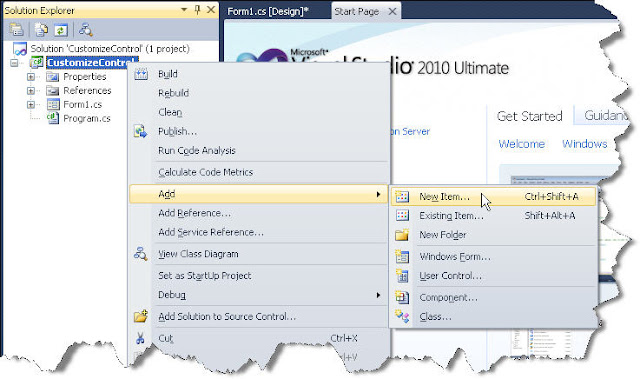ภาพรวมของคำสั่งทั้งหมด จะประกอบด้วยคลาส Generic และ Interface และ Class ที่ Implement มาจาก Interface
ภายใน Interface IPerson เป็นเพียงการประกาศ method printTpListBox เพื่อให้ Class อื่นๆนำไป Implement ต่อ
interface IPerson
{
void printToListBox(ListBox listbox);
}
Class ที่นำ IPerson ไป Implement ต่อคือ Class Person ที่การทำงานคือการเก็บค่าของบุคคล โดยมี Property Fname (string) , Lname (string) , Age (int) และ Position (string) และได้ Implement method printToListBox จาก IPerson
public class Person : IPerson
{
string fname;
public string Fname
{
get { return fname; }
set { fname = value; }
}
string lName;
public string LName
{
get { return lName; }
set { lName = value; }
}
int age;
public int Age
{
get { return age; }
set { age = value; }
}
string position;
public string Position
{
get { return position; }
set { position = value; }
}
//Constructor ที่ผ่านค่า Parameter มาให้ Property
public Person(string firstName, string lastName, int age, string position)
{
this.fname = firstName;
this.lName = lastName;
this.age = age;
this.position = position;
}
//แสดงข้อมูลบุคคลใน ListBox
public void printToListBox(ListBox listbox)
{
listbox.Items.Add(this.fname + " " + this.lName + " อายุ " + this.age + " ตำแหน่ง " + this.position);
}
}
ต่อมาคือ Class Generic ที่กำหนดเงื่อนไขให้รับ Type เป็น Instance ใดๆที่มาจาก Class ที่ Implement มาจาก IPerson โดยที่กำหนด Key word "where" ต่อท้าย Class
class personCollection<T> where T : IPerson
{
//สร้าง Collection Queue ที่ทำงานแบบ FIFO
Queue<T> personCol = new Queue<T>();
//method เพิ่มข้อมูล
public void Add(T item)
{
personCol.Enqueue(item);
}
//แสดงข้อมูลผ่าน ListBox
public void print(ListBox listbox)
{
while (personCol.Count > 0)
{
T ps = personCol.Dequeue();
ps.printToListBox(listbox);
}
}
}
การเรียกใช้งานก็เหมือนกับการใช้ Generic Type แต่เปลี่ยนจากการกำหนดชนิดข้อมูลเดิมเป็น Class ที่ Implement มาจาก Interface
public partial class Form2 : Form
{
public Form2()
{
InitializeComponent();
//สร้าง Instance จาก Class Person
Person p1 = new Person("Keattipoom", "Yamyim", 23, "Sale Manager");
Person p2 = new Person("Keatkamon", "Kunsopit", 29, "Senior Programmer");
//สร้าง Generic plist ขึ้นใช้งาน โดยกำหนด Type เป็น Person
personCollection<Person> plist = new personCollection<Person>();
//เพิ่ม Instance ของ Class Person ที่มีข้อมูลอยู่แล้ว
plist.Add(p1);
plist.Add(p2);
//ให้ Generic plist แสดงค่าที่ได้รับออกมาทาง ListBox
plist.print(this.listBox1);
}
}
 |
| เมื่อรันโปรแกรม ข้อมูลจะถูกแสดงใน ListBox |


























